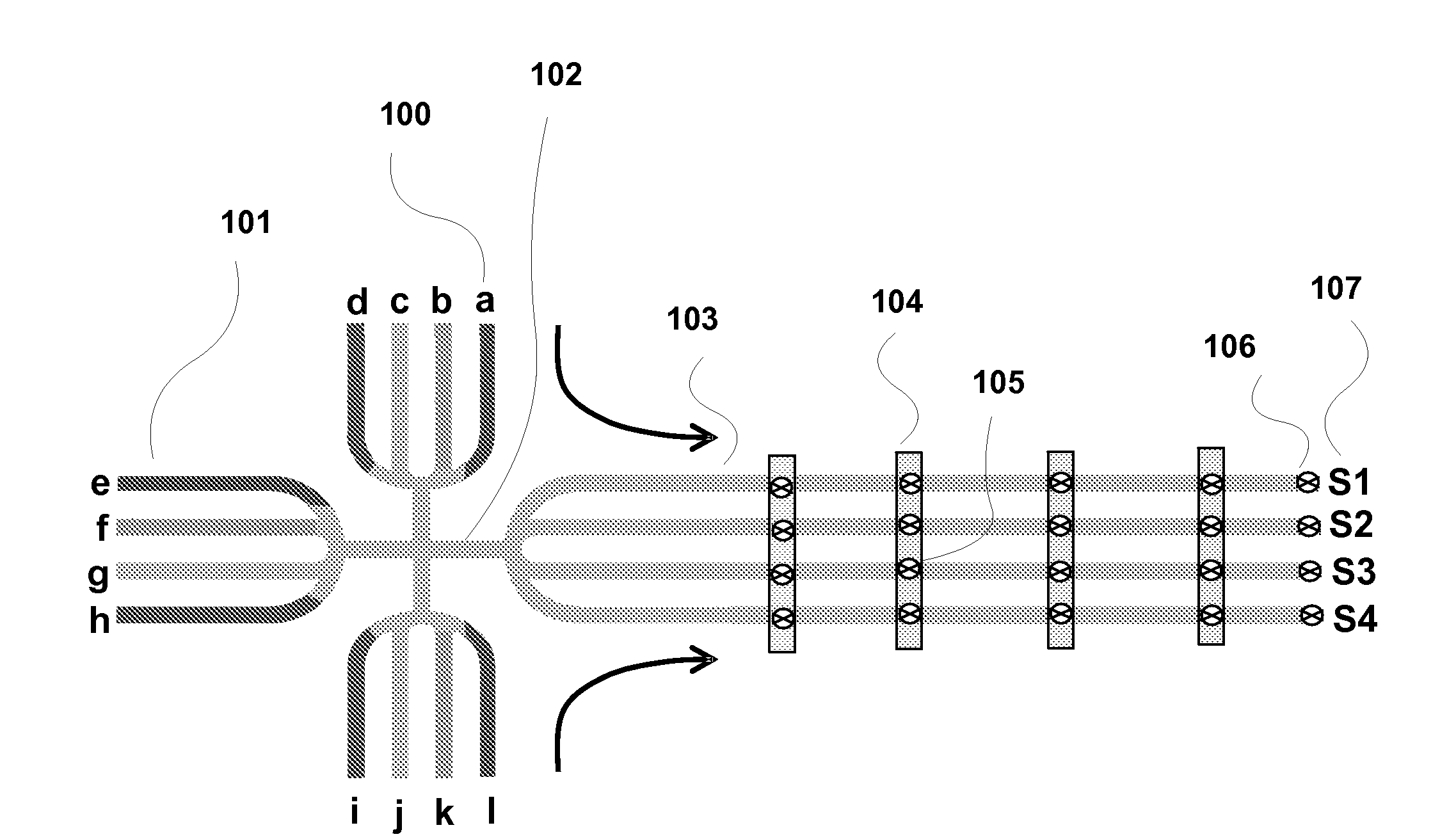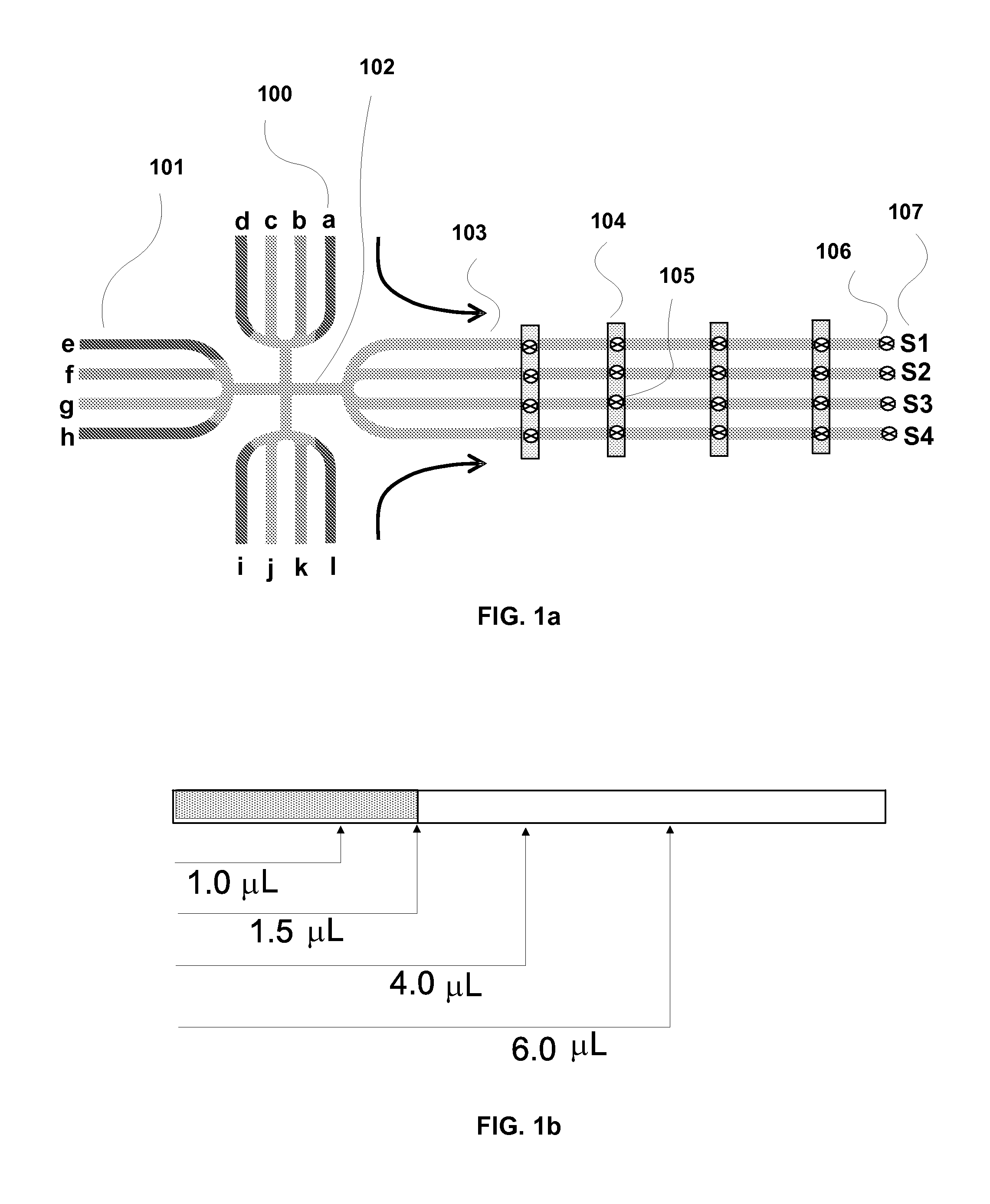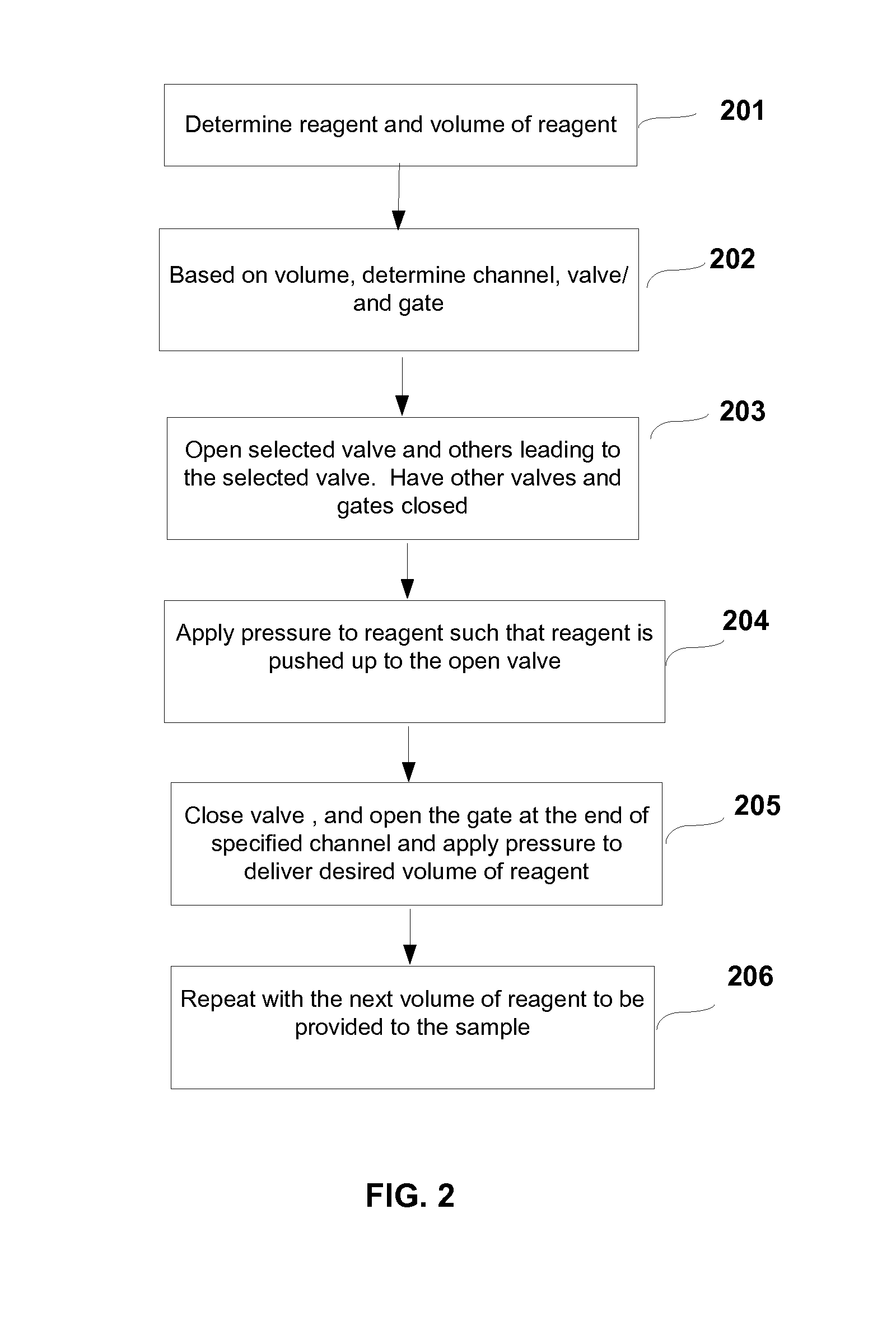System and method for multiplex liquid handling
a fluid handling and multiplex technology, applied in the field of multiplex liquid handling, can solve the problems of difficult fabrication, introducing a potential for error into the overall process, and conventional approaches often involve extremely complicated fluidic networks
- Summary
- Abstract
- Description
- Claims
- Application Information
AI Technical Summary
Benefits of technology
Problems solved by technology
Method used
Image
Examples
example 1
Lab Card for Performing WTA Assay
[0194]Experiments were performed to perform the WTA assay protocol as illustrated in FIG. 14 using a lab card (1100), base plate assembly (1700) and a pneumatic manifold (1601). All the twelve reagents to produce a sample for hybridization were stored in the reaction card (1100). The reaction card provided the mirofeatures to perform the required reactions illustrated in FIG. 14. A pneumatic manifold was used to deliver the required air requirements necessary to perform the reactions. The base plate assembly (1700) included a cold region (1604), heating / cooling unit (1605 / 1606), and a magnetic field (1607).
[0195]The assay began with placing the reaction card (1100) into the pocket (1702) of the base plate assembly (1700). Lab View was used to operate the system and provide temperature control. A Total RNA (1410) sample was transferred from the storage chamber to the reaction chamber where the second reagent, 1st strand buffer (1411) was added to synt...
example 2
Performing an Assay Using a Reaction Card
[0196]Experiments were performed to perform the WTA assay protocol as illustrated in FIG. 14 using a lab card (1100), base plate assembly (1700) and a pneumatic manifold (1601). All the twelve reagents to produce a sample for hybridization were stored in the reaction card (1100). The reaction card provided the mirofeatures to perform the required reactions illustrated in FIG. 14. A pneumatic manifold was used to deliver the required air requirements necessary to perform the reactions. The base plate assembly (1700) included a cold region (1604), heating / cooling (1605 / 1606), and a magnetic field (1607).
[0197]The assay began with placing the reaction card (1100) into the pocket (1702) of the base plate assembly (1700). Lab View was used to operate the system and provide temperature control. The Total RNA (1410) sample was transferred from the storage chamber to the reaction chamber where the second reagent, 1st strand buffer (1411) was added to...
example 3
System Using a Set of Lab Cards
[0198]A set of lab cards are utilized to perform an assay: a sample card, a reaction card, an array processing card for hybridizing, washing, and staining and an array processing card for scanning. All the lab cards are universal such that each lab card can be utilized in a plurality of various assays, applications, etc. For example, a universal reagent card provides a number of lab card features for a plurality of assays or reactions.
[0199]At least one sample from a patient is stored in a sample card. The sample is then transferred into a reagent card where all the reagents are stored to perform the assay, for example, the WTA assay as described in the first example. The resulting sample is then transferred to an array processing card that includes a plurality of array pegs for hybridizing, washing and staining. After processing the arrays, the array pegs are then transferred and scanned into an array processing card specifically for scanning.
PUM
| Property | Measurement | Unit |
|---|---|---|
| temperatures | aaaaa | aaaaa |
| temperatures | aaaaa | aaaaa |
| temperatures | aaaaa | aaaaa |
Abstract
Description
Claims
Application Information
 Login to View More
Login to View More - R&D
- Intellectual Property
- Life Sciences
- Materials
- Tech Scout
- Unparalleled Data Quality
- Higher Quality Content
- 60% Fewer Hallucinations
Browse by: Latest US Patents, China's latest patents, Technical Efficacy Thesaurus, Application Domain, Technology Topic, Popular Technical Reports.
© 2025 PatSnap. All rights reserved.Legal|Privacy policy|Modern Slavery Act Transparency Statement|Sitemap|About US| Contact US: help@patsnap.com



